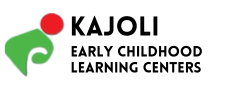What is Kajoli?
“Kajoli Model” is an early childhood learning (ECL) model developed by Research Initiatives, Bangladesh (RIB)in 2002 following the successful completion of a unique action research.The research was specifically aimed at developing a model that would attract children from the most disadvantaged communities in Bangladesh to learning and schooling.
As an action research, the development of the model which emerged in the initial years of research in Kajoli, Magura, continued over the years in some 150 “Kajoli model centers” all over Bangladesh. In the process adjustments were progressively made to the model. While some of these centers have subsequently closed down, over 120 of them are still in existence in some 10 districts of Bangladesh. Over 5200 children are graduating every year from these centers and moving on to the Government primary school system. More centers are coming up regularly.
